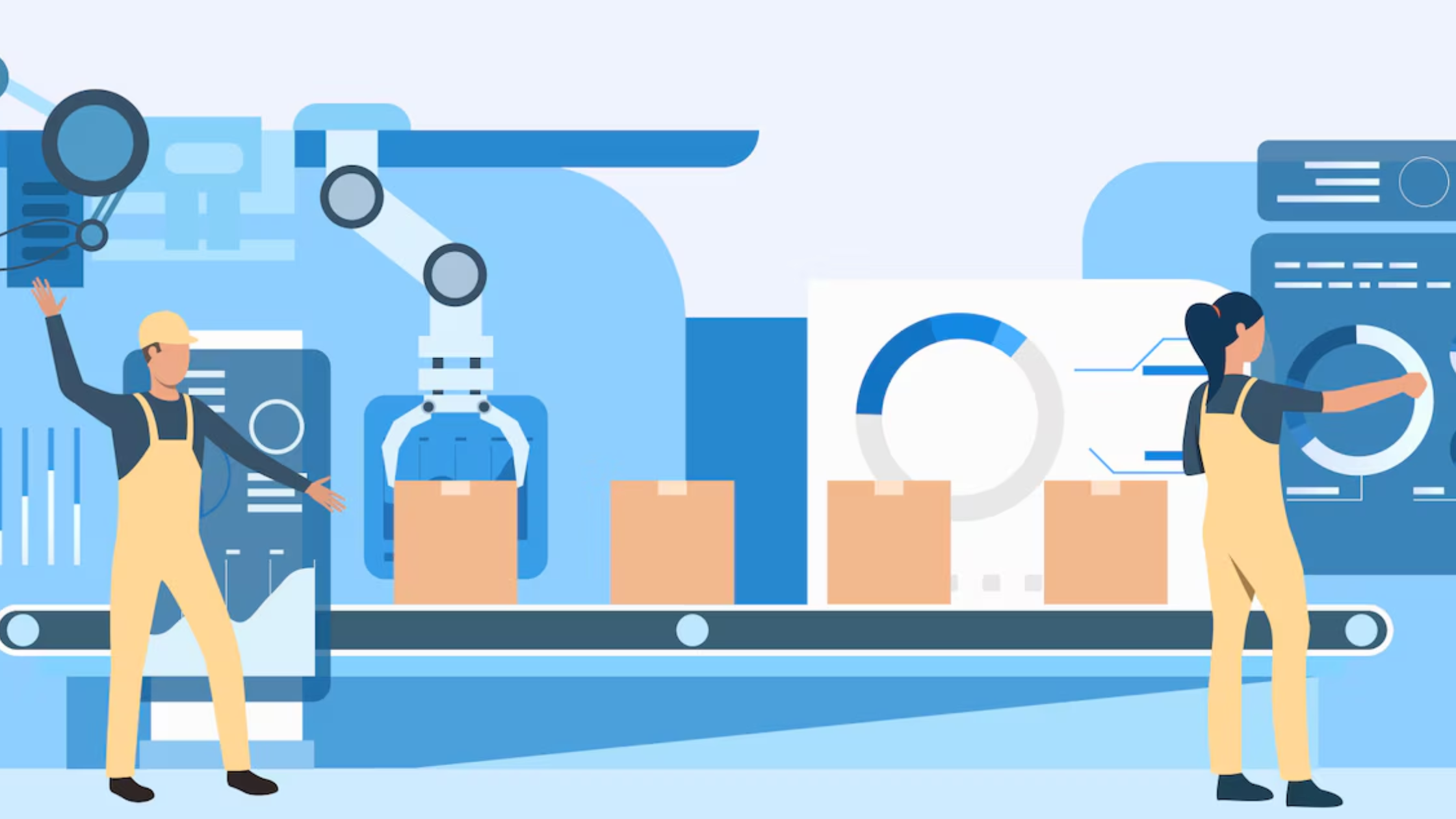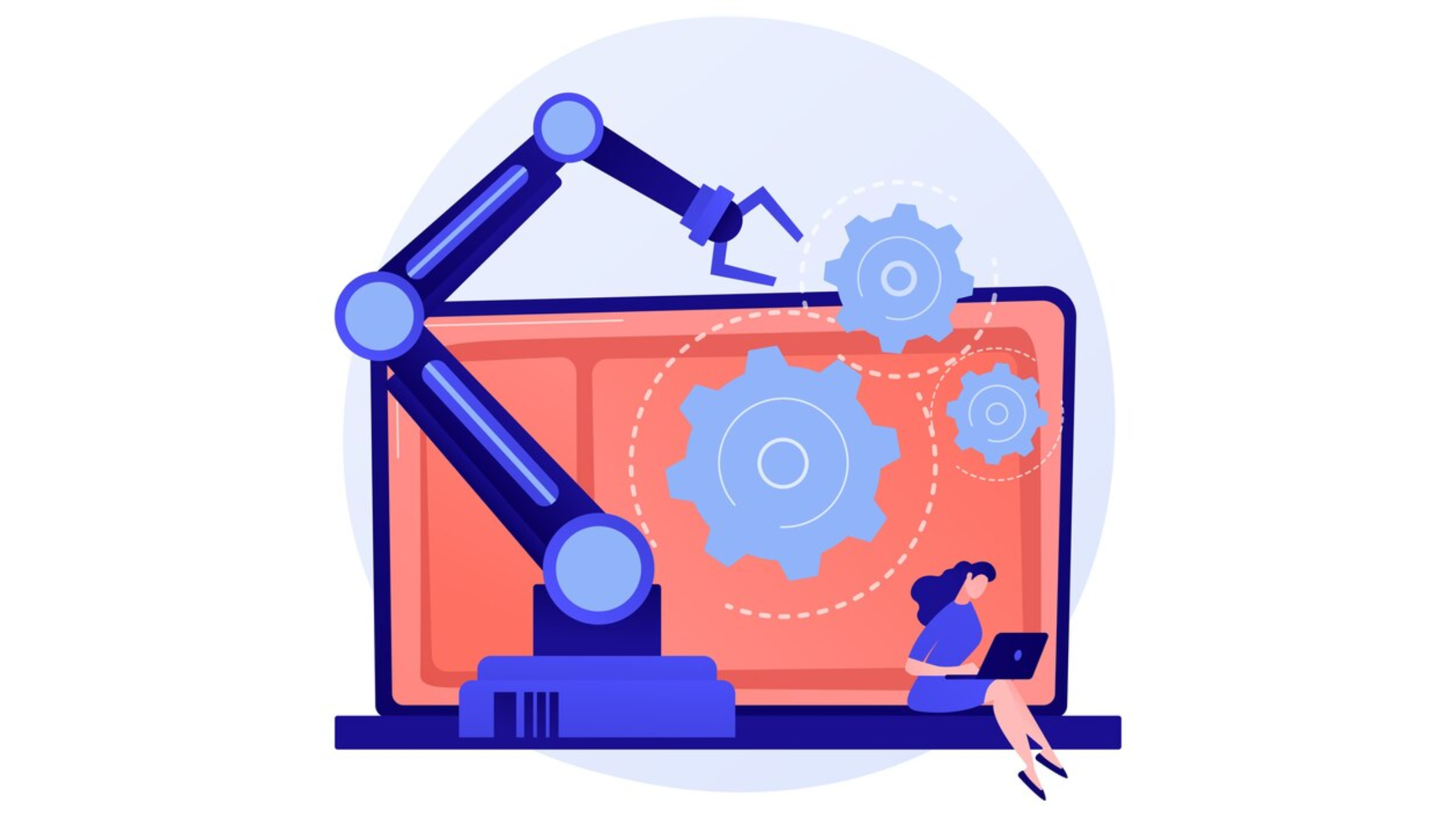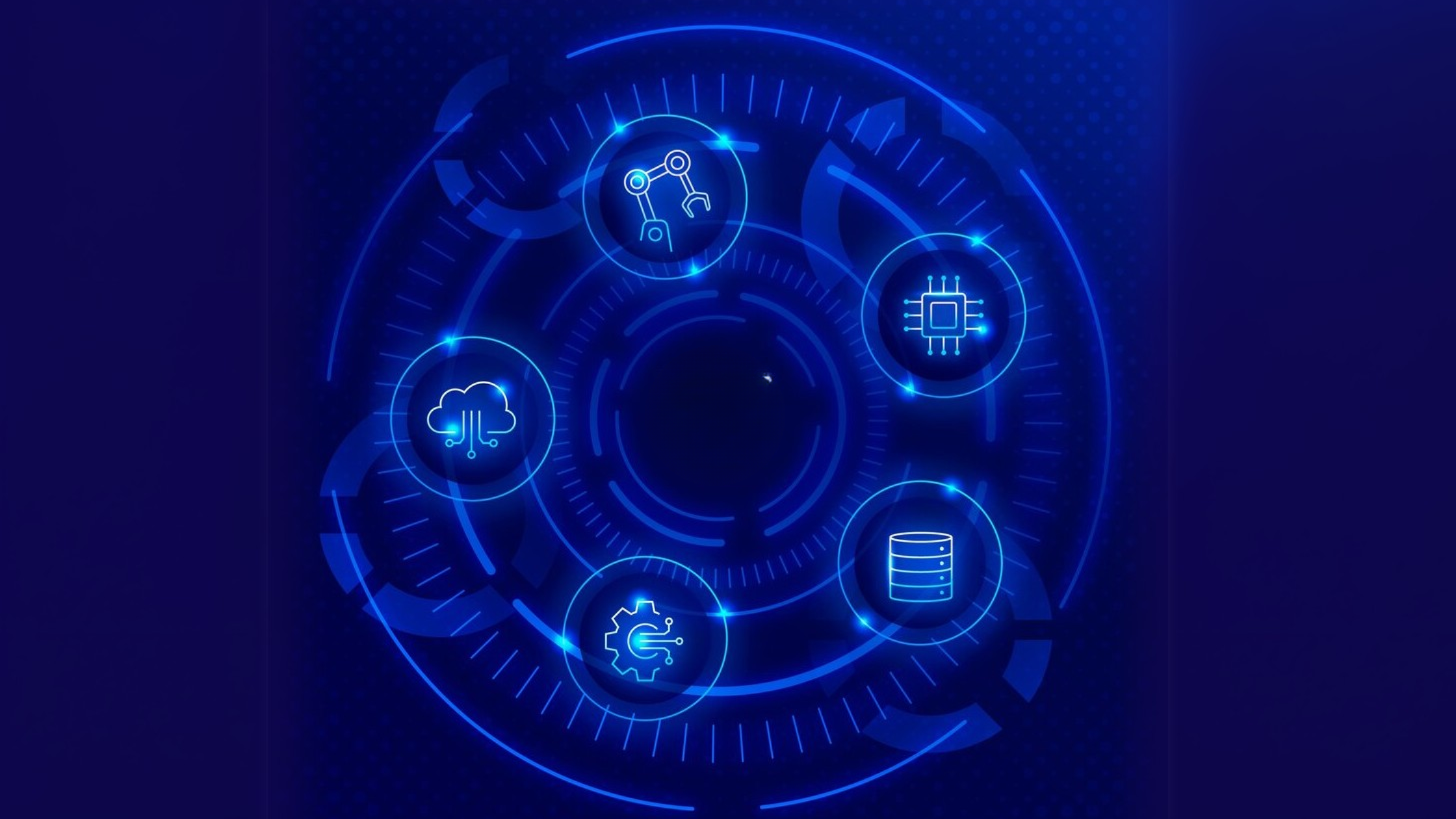The manufacturing industry is going through a paradigm shift, with AI integration the industry is faster, better, and more efficient. It cuts down machine failures, boosts product quality, and makes work safer and faster. Experts predict the AI market in manufacturing could hit $695 billion by 2032. That’s not a small trend. New tech, smarter processes, and constant updates are everywhere. In this article, you’ll learn what’s driving these changes, the perks and pitfalls, and how to start your own smart factory journey.
The Role of AI in Manufacturing
Artificial intelligence in manufacturing is making a huge impact on efficiency through process automation and ever-increasing data analysis. AI is having an impact in the following areas:
Predictive Maintenance & Real-Time Monitoring
AI has become an asset in modern manufacturing—not by replacing workers, but by alerting teams when machines show early signs of trouble. It sifts through live sensor readings, performance dips, and prior repair logs to predict future maintenance needs. This helps reduce unexpected breakdowns and keeps machines running longer. At General Electric, they have managed to convert turbines using AI for efficiency and maintenance schedules into powerful machines.
To implement such advanced predictive systems effectively, manufacturers need more than just data—they need specialized talent. That’s why many choose to hire an AI developer in the US, someone who understands both the technical nuances of machine learning and the practical demands of industrial environments. With the right expertise, companies can develop scalable, custom AI models that integrate smoothly into existing operations and deliver measurable value.
Image Recognition Defect Detection for Quality Assurance
Computer Vision solutions have the capability of automatically identifying defects with unmatched precision. AI models like deep learning models are faster and better at monitoring products on a production line due to their ability to search for images and videos for the most minor defects, minimizing waste. Paint defects on automobiles at BMW are detected using AI-based image recognition systems, which improves quality control and reduces rework.
Optimizing Inventory and Demand Forecasting
AI models are able to take into account market trends, sales data, seasonality, already planned promotions, and even the weather to make demand forecasts. This enables the organization to limit overproduction and waste in its business. Walmart uses machine learning to optimally stock goods in the entire supply chain, cutting business costs while still achieving customer satisfaction.

Process Control Automation
A machine’s function may be controlled within certain limits in an effort to maintain quality and reduce the risk of changes to set parameters. AI supervises and controls the processes using sensors; for example, AI can regulate the temperature, pressure, or flow rate of fluids. For instance, Bosch makes use of modern automation systems in the manufacturing plants to optimize the processes, minimize defects, and improve the precision of part production for automobiles.
Robotics and Automation
Artificial intelligence powered robots take on complex, hazardous, or repetitively monotonous activities with much greater precision than human beings. Labor savings are a major benefit because these robots work 24/7. In order to facilitate fast delivery, AI enables faster picking, packing, and sorting in logistics. Advanced robotics is implemented throughout Tesla’s production lines in electric vehicles to enhance production speed and quality.
Advantages of Using AI in Manufacturing
Using AI in manufacturing has a number of tactical benefits.
>Less Downtime:Predictive systems reduce disruptions, keeping lines running smoothly.
>Higher Product Standards: Automated inspections mean fewer defects and happier customers.
>Faster Innovation: AI-assisted design tools shrink development cycles.
>More Agile Operations: AI helps factories scale output in response to real-time demand shifts.
>A Safer Workplace:Sensors and monitoring systems help spot risks before they become accidents.
>Data-Driven Decisions: Real-time analytics bring clarity to complex production challenges.
Implementing AI in Manufacturing
 Successfully using AI in manufacturing starts with the right strategy—and the right partner. Working with an AI development company in US that specializes in AI software development can help you build solutions that match your exact needs. Here’s a clear step-by-step guide:
Successfully using AI in manufacturing starts with the right strategy—and the right partner. Working with an AI development company in US that specializes in AI software development can help you build solutions that match your exact needs. Here’s a clear step-by-step guide:
1.Outline Prime Areas: Determine where AI will bring the highest value, such as predictive maintenance, quality control, or supply chain optimization. You can get this checked by a trustworthy AI software development company.
2.Data Evaluation: Evaluate the accessibility and quality of your data. Ensure you have sufficient, clean, and well-organized data to productively train the AI models.
3.Pilot Testing: Start with automated pilot-testing to validate AI solutions before rolling them out across the organization at scale.
4.System Integration: Apply AI solutions as interfaces with your existing systems. This may include modernizing legacy systems or employing middleware for seamless data communication, which enables interoperability.
5.Employee Training: Empower employees to effectively engage with AI tools and systems. Mitigate perceived reasons for AI-induced job loss by focusing on how their roles will be enriched.
6.Information Security Policies: Implement robust information security policies to protect your AI systems and confidential data from potential vulnerabilities.
7.Model Maintenance: Conduct periodic assessments and evaluations of your AI products. Use the information and metrics collected to, over time, adjust your models and procedures to achieve the desired outcomes.
By partnering with the right AI development company in the US and by taking advantage of a customized AI software development solution, producers are able to create smart, lean, and future-proof operations, one step at a time.
Challenges of Adopting AI in Manufacturing
While AI could greatly change how manufacturing works, a few serious hurdles may slow down how fast it’s embraced. Some of the most prevalent include:
>High Upfront Cost: AI tools—like advanced sensors, software, and cloud systems—can be expensive. On top of that, teams need training to use them correctly. For small and mid-size manufacturers, this can feel risky.
>Data Quality and Management:AI needs clean, structured data to work well. Many factories either don’t have enough data or it’s scattered, outdated, or unorganized. Without proper data pipelines, AI systems can give poor or even wrong results. Building a solid data foundation is key.
>Threats to Cybersecurity: As factories connect more machines and systems, they become easier targets for cyberattacks. A single weak point—like an old device or unsecured cloud service—can put the whole operation at risk.
>Legacy System Integration: Many factories still run on old equipment and software. These legacy systems weren’t built to connect with modern AI platforms. Replacing them is costly and slow. Even integration takes time, careful planning, and technical skill.
Emerging Trends in AI for Manufacturing
 Across industries, AI adoption is growing fast, boosting how smart, efficient, and capable modern factories become. A few trends behind this are:
Across industries, AI adoption is growing fast, boosting how smart, efficient, and capable modern factories become. A few trends behind this are:
>AI with IIoT Integration: AI and IIoT now operate hand-in-hand. Devices on factory floors gather real-time info. AI reads it and responds quickly, for repairs before failure, smart energy use, and quicker decisions.
>Digital Twins: A digital twin constitutes a virtual duplication of a real-world system or machine. Presently, many enterprises employ AI in conjunction with digital twins to simulate operations in advance, reduce system vulnerabilities, and conserve energy.
>Generative AI in CAD: The application of generative AI has significantly advanced the field of computer-aided design, enabling engineers to accelerate design workflows. It autonomously proposes component configurations based on defined objectives such as cost constraints or weight reduction.
>Voice AI: Some machines now understand voice commands. Workers can talk to machines instead of using buttons. This is helpful in loud, fast, or dangerous environments. It makes tasks quicker and safer.
>Edge AI: Instead of relying on the cloud, Edge AI runs its processes straight from the equipment itself. This setup lets machines respond faster and more precisely—whether it’s spotting flaws or guiding robotic functions—without delay.
>Sustainable Manufacturing: AI gives factories tools to lean into eco-friendly methods. It locates where energy use can drop, cuts down on waste, and directs better decisions around materials.
Why AI in Manufacturing Is No Longer Optional
Global manufacturing is undergoing a radical transformation thanks to AI. It is no longer a futuristic concept! The value of a business is further highlighted by artificial intelligence through its production efficiency, operational downtimes, and quality measures. Nearly every business has found AI useful, indicating its necessity in this quickly evolving environment.
The question is not whether to use AI, but rather how quickly you can integrate it into your processes as more and more manufacturers adopt intelligent technologies.
Are you prepared to jump? Collaborate with a reputable AI development firm in the US to create tailored and flexible plans that complement your operational procedures and offer practical advantages.
FAQs on AI in Manufacturing
What kind of AI is used for maintenance and quality checks in digital manufacturing?
Manufacturers rely mostly on predictive AI and computer vision. Predictive AI studies how machines behave. It alerts you early when something seems off, so you can fix it in time. Computer vision watches products as they’re made. It spots mistakes right away, saving time and cutting down on faulty items.
What is a common use of AI in the manufacturing industry?
Predictive maintenance shows up in nearly every factory. By collecting equipment data through sensors, it catches small issues before they grow. This way, breakdowns are avoided, and production keeps moving.
What is AI in manufacturing?
Manufacturing uses AI by bringing in advanced tech such as robotics, computer vision, and learning algorithms to fine-tune operations. It focuses on automating repeated actions, catching flaws, and helping decisions happen in less time.